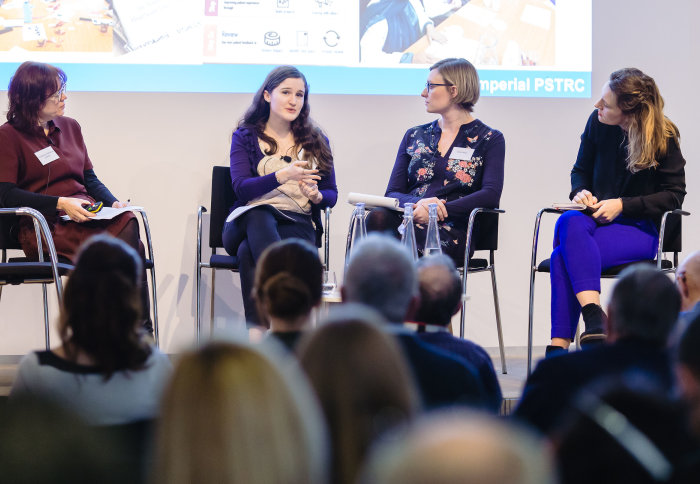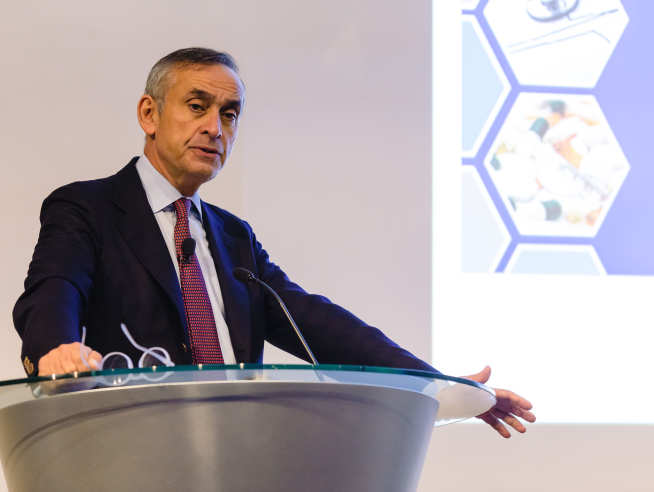Digital data: a double-edged sword for safer healthcare

Technology and digital security a key feature of discussions at Sixth Annual Patient Translational Research Centre Symposium.
How can we make the NHS the safest healthcare system in the world? Can we harness the power of digital technology to improve patient safety? What digital innovations do we need to improve the safety of care, and what approaches are necessary to enable healthcare staff to interact with these innovations in technology?

These are big questions. But none too bold to be addressed at our recent NIHR Imperial Patient Safety Translational Research Centre (PSTRC) Symposium. By tackling challenging topics such as these, our event provoked impassioned discussion and debate while whetting the captive audience’s appetite with plenty of food for thought.
Professor the Lord Ara Darzi, Director of the NIHR Imperial PSTRC opened the annual Symposium by reminding delegates of why our Centre exists: despite progress, there’s still “a huge amount of work to do” to improve the safety of care. Medication errors, antimicrobial resistance and cybersecurity were top of his list as threats to safer care, with the latter a major focus of this year’s event.
Tech on trial
First to the floor was Professor David Bates from Harvard Medical School. He said that while “harm is ubiquitous” – citing research suggesting that around 1 in 10 patients experience harm when they come into a hospital – so too is information technology in healthcare. He made a strong case for the proliferation of IT, presenting evidence suggesting that it could have benefits ranging from improved medication safety to better patient monitoring. Despite these positives, he warned against becoming dependent on digital.
“Information technology is just a tool,” he said. “If you have good IT but don’t have a good safety programme, you won’t get anywhere. You can’t solely rely on it.”
Baroness Dido Harding, Non-Executive Chair of NHS Improvement, echoed this point and emphasised the role that humans have to play. “Digital is changing everything, and it’s changing healthcare dramatically,” she said.
“But it’s people that facilitate the change towards something more positive.
“Technology is about making things better, and enabling staff to be better at what they do. It’s a powerful driver to deliver better safety culture.”
This paints a pleasing picture of tech. But there were no rose-tinted glasses in the audience. Security start-up founder Cal Leeming was quick to bring the reality of digital security’s flaws into sharp focus. He showcased the worrying weaknesses of systems we’re familiar with, ranging from diabetics’ insulin pumps to the messaging service WhatsApp. But perhaps most stark was his point that despite being one of the most heavily-regulated industries, our health system may be one of the weakest when it comes to cybersecurity.
So why is our health system perforated with holes from which our precious data can seep through? Andrew Eland, Deep Mind’s director of engineering, pointed the finger at an historic “chronic underinvestment” in IT infrastructure. This oversight, Eland said, can be attributed to the fact that “we don’t have a good understanding of the economic benefit of investing in security”. Whereas the benefits of equipment such as incubators for premature babies are plain and tangible, those of new security systems are less clear-cut, he explained.
People power
While digital was a hot topic of the day, it was joined by another imperative of safety: involvement. Highlighting the need for patient empowerment, Dr Neelam Dhingra-Kumar from the World Health Organisation put the onus on patients to be their own advocates: “The most important lever for change is people themselves, for patients to be aware of their needs and their rights.
“Until patients take on their own responsibility, we won’t achieve positive change.”
If patient involvement is done right, though, Director of the NIHR Yorkshire and Humber PSTRC Professor Rebecca Lawton mused that it could be crucial towards the goal of shifting healthcare from a focus on treatment to prevention.
But what are some of the barriers for patients becoming more involved in developing healthcare? Language was one suggestion that seemed to bring agreement among one panel discussing the subject. Ditch the jargon and off-putting acronyms, was the advice of Uscreates co-founder Zoë Stanton, and “speak the language of the people we’re trying to reach”.
And so in spite of the differing backgrounds, experiences and expertise of the day’s speakers, a thread emerged among the talks that stitched together a clear picture: it’s people, not technology, that are at the heart of positive change in patient safety.
While technological advances will no doubt have a role, it’s patient empowerment that’s necessary to catalyse much-needed improvements in healthcare.
“When you get your hands dirty and get involved in improving the system,” said NHS National Director of patient safety Dr Aidan Fowler, as he drew the event to a close, “you can make a bigger difference.”
Article text (excluding photos or graphics) © Imperial College London.
Photos and graphics subject to third party copyright used with permission or © Imperial College London.